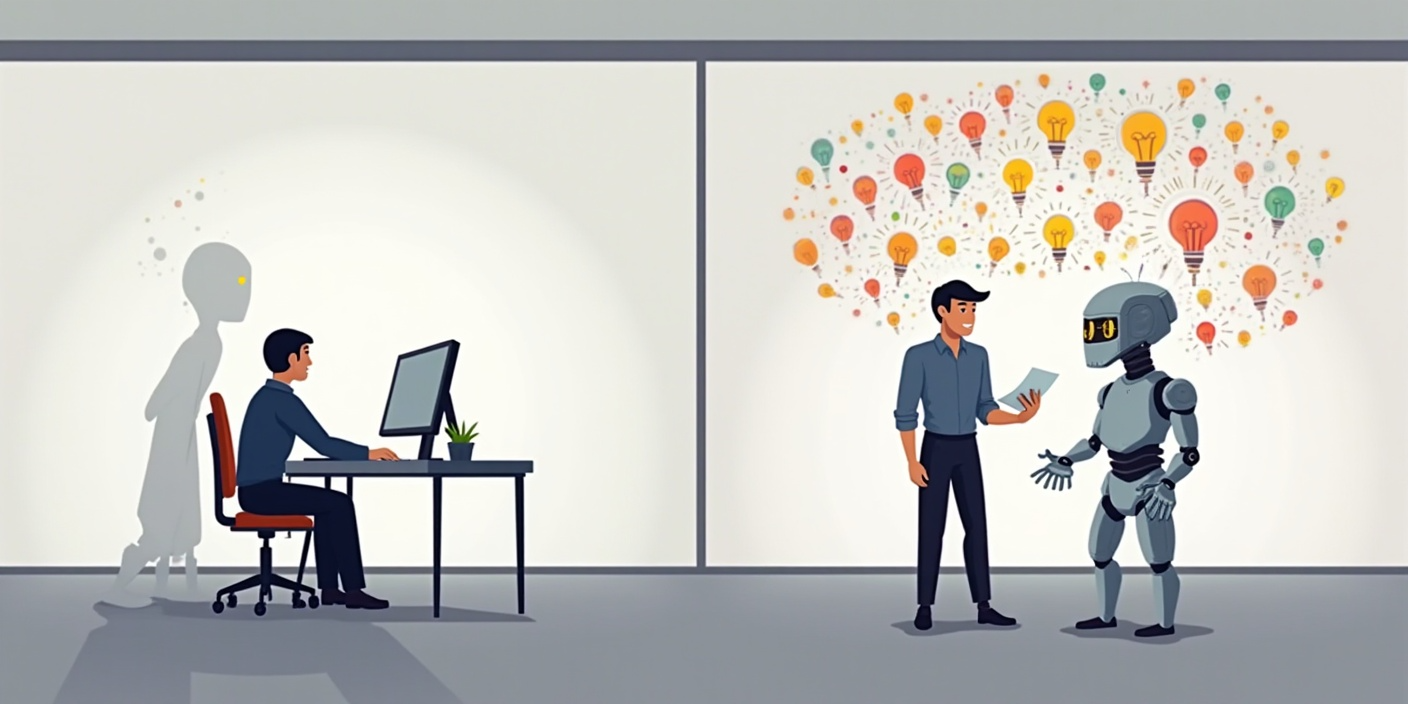Joy-Focused Design
Highlights
1. ChatGPT now offers integrated web search for Plus and Team users.
2. LinkedIn has launched an AI agent, Hiring Assistant, designed to automate recruitment tasks.
3. Google’s upcoming “Project Jarvis” aims to automate web-based tasks in Chrome.
4. D-ID has launched an AI Video Marketing Suite featuring hyper-realistic avatars and tools for video campaigns.
5. Iambic Therapeutics has launched Enchant, an AI model that accurately predicts drug absorption and efficacy.
6. At TED AI 2024, attendees advocated for a shift from productivity-focused to joy-focused design.
7. A new article argues that AI can be used to facilitate “collective memory”, “collective attention”, and “collective reasoning” of a company.
Innovation Insights
1. Five takeaways from TED AI 2024 (IDEO)
At TED AI 2024, human-centered AI emerged as a key focus, emphasizing transparency, responsibility, and inclusivity. Concerns about opaque “black box” AI models highlighted issues of ownership, copyright, and usability, especially in fields like healthcare, stressing the need for ethical data practices. Attendees advocated for a shift from productivity-focused to joy-focused design, warning that without mindful implementation, AI could lead to burnout rather than more free time. The appeal of Small Language Models (SLMs) surfaced as an energy-efficient alternative to resource-intensive LLMs, suggesting a targeted approach for specific applications. Finally, discussions on AI’s potential in interpreting complex communication systems, such as sperm whale codas, underscored the growing responsibility of designing AI that respects all forms of life and ecosystems.
2. How to use AI to build your company’s collective intelligence
(Harvard Business Review)
To use AI to build organizational collective intelligence, managers should view AI as a tool to enhance human skills rather than purely automate tasks. AI can strengthen “collective memory” by centralizing knowledge and expertise, allowing employees to access and build on shared information efficiently. For “collective attention,” AI aids in streamlining communication and aligning focus, which helps teams coordinate on high-priority tasks. In “collective reasoning,” AI can help align team goals by integrating diverse viewpoints and supporting decision-making processes. By focusing on collective intelligence rather than automation, organizations can use AI to support long-term adaptability, innovation, and human-centered growth.
3. AI search could break the web (MIT Technology Review)
AI-powered search engines like Perplexity AI risk disrupting the digital economy by summarizing and repackaging content from websites without driving traffic back to the original sources, undermining content creators’ revenue streams. Traditional copyright laws may not fully protect creators, prompting governments to consider intervention similar to media bargaining codes, which could compel platforms to pay for content use. However, such regulations could have unintended consequences, potentially restricting the free flow of information and benefiting only major news organizations. To avoid heavy-handed regulation, the AI industry could proactively establish a reward system for content creators, ensuring a sustainable digital economy while preserving access to high-quality information.
AI Innovations
1. OpenAI
ChatGPT now offers integrated web search for Plus and Team users, providing quick, accurate answers with links to reputable sources, thanks to partnerships with news and data providers and an advanced AI model (OpenAI).
2. Alphabet
Google’s upcoming “Project Jarvis” aims to automate web-based tasks in Chrome, performing actions like research and booking by interacting directly with a web browser, potentially debuting in December (The Verge).
Google’s new experimental tool, called “Learn About”, offers an interactive, personalized learning experience, acting as a conversational tutor to help users explore and understand topics more deeply (Maginative).
Google Maps has introduced Gemini-powered curated recommendations, enhanced navigation features, immersive route views, and real-time weather reporting (Google).
3. Apple
Apple Intelligence, now available on iPhone, iPad, and Mac, offers features like enhanced Siri, writing tools, photo clean-up, and smart notifications, focusing on privacy and on-device processing (Apple).
4. Meta
Meta’s new free NotebookLlama rivals Google’s NotebookLM by turning documents into podcast-style conversations using customizable AI (Tom’s Guide).
Meta’s new research advances in touch perception, dexterity, and human-robot interaction aim to bring embodied AI closer to advanced machine intelligence by enabling robots to perform complex tactile tasks, interact meaningfully with humans, and collaborate in real-world scenarios (Meta).
5. Microsoft
LinkedIn has launched its first AI agent, Hiring Assistant, designed to automate recruitment tasks like drafting job descriptions, sourcing candidates, and managing interactions, targeting B2B recruitment users as a significant step in LinkedIn’s integration of generative AI tools (TechCrunch).
6. xAI
Elon Musk’s xAI has enhanced its Grok AI model with image-understanding capabilities, allowing premium users on X to upload images and ask questions about them (TechCrunch).
7. Anthropic
Anthropic has launched a desktop app for its Claude AI chatbot on Mac and Windows, adding to its existing mobile apps, which now support voice dictation, allowing users to interact more conveniently with Claude from both desktop and mobile platforms (The Verge).
8. Coinbase
Coinbase’s new “Based Agent” platform enables developers to quickly create AI-powered crypto agents with blockchain capabilities (Yahoo).
9. ElevenLabs
ElevenLabs’ new Voice Design API and X to Voice project allow users to generate unique, customizable voices from prompts or Twitter profiles (Blockchain News).
10. Video
An AI-generated version of Minecraft created by Decart and Etched, built entirely from gameplay clips and keyboard inputs without any code, showcases the potential for real-time interactive video generation and hints at the future of video game development despite current hardware limitations (MIT Technology Review).
D-ID has launched an AI Video Marketing Suite featuring hyper-realistic avatars and tools for creating personalized, multi-language video campaigns (PR Newswire).
11. Curate content
Smashing, a new AI-powered app, curates web content like news, blogs, and social media, offering personalized feeds and an AI Questions feature that allows users to explore multiple perspectives and interact creatively with stories (TechCrunch).
12. Drug development
Iambic Therapeutics has launched Enchant, an AI model that significantly improves early drug discovery by accurately predicting drug absorption and efficacy, potentially halving development costs (Reuters).
Other Innovations
1. Robotics
MIT researchers developed a technique inspired by large language models to efficiently train versatile robots on diverse tasks by pooling heterogeneous data, enabling quicker adaptation without starting training from scratch each time (MIT News).
2. 3D printing
Impact printing is a sustainable, cement-free building method using high-velocity jets of Earth-based materials to create strong, recyclable structures with lower carbon emissions than traditional 3D printing (Ars Technica).
3. Exosome
Exosomes, tiny vesicles once thought to contain cellular waste, are now being explored for their potential in diagnostics, drug delivery, and regenerative therapies, despite unproven claims from cosmetic clinics that tout them as a costly anti-aging cure-all (MIT Technology Review).







